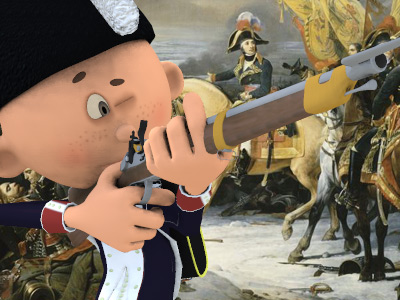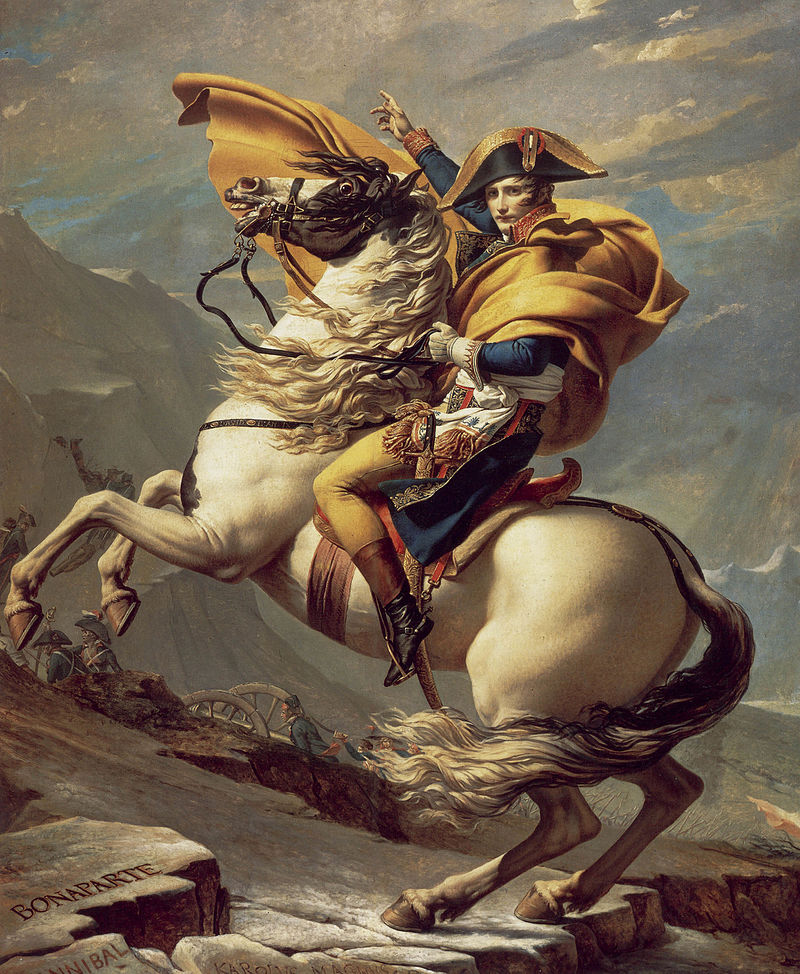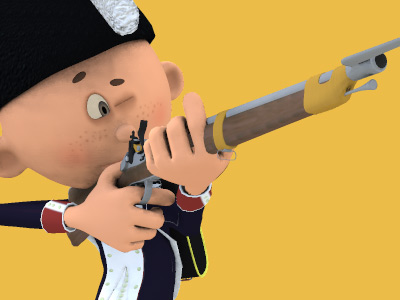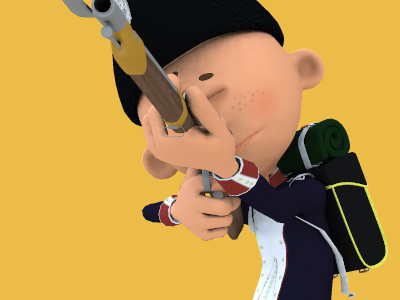War of the Second Coalition (1798–1802)
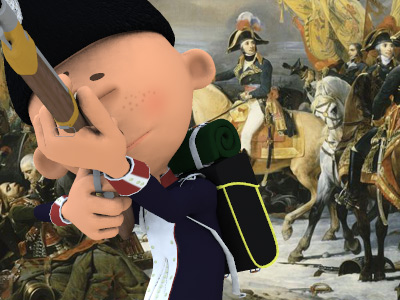
Campaigns of 1798
1798 was a relatively quiet period in the French Revolutionary Wars. The major continental powers in the First coalition had made peace with France, leaving France dominant in Europe with only a slow naval war with Great Britain to worry about. The leaders of the Directory in Paris feared Napoleon Bonaparte's popularity after his victories in Italy, so they were relieved when he proposed to depart France and mount an expedition to Egypt to gain further glory.
Campaign in Egypt
At this time, Egypt was a province of the Ottoman Empire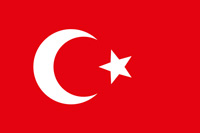 The Ottoman Empire, also known as the Turkish Empire, was an empire that controlled much of Southeast Europe, Western Asia, and Northern Africa between the 14th and early 20th centuries. The Ottomans ended the Byzantine Empire with the conquest of Constantinople in 1453. The Ottoman Empire's defeat and the occupation of part of its territory by the Allied Powers in the aftermath of World War I resulted in its partitioning and the loss of its Middle Eastern territories., but Napoleon
The Ottoman Empire, also known as the Turkish Empire, was an empire that controlled much of Southeast Europe, Western Asia, and Northern Africa between the 14th and early 20th centuries. The Ottomans ended the Byzantine Empire with the conquest of Constantinople in 1453. The Ottoman Empire's defeat and the occupation of part of its territory by the Allied Powers in the aftermath of World War I resulted in its partitioning and the loss of its Middle Eastern territories., but Napoleon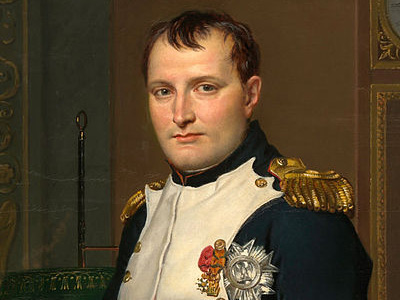 Napoleon Bonaparte (1769-1821), was a French military and political leader who rose to prominence during the French Revolution and led several successful campaigns during the French Revolutionary Wars. As Napoleon I, he was Emperor of the French from 1804 until 1814, and again in 1815. One of the greatest commanders in history, his wars and campaigns are studied at military schools worldwide. Napoleon Bonaparte » viewed invading Egypt as a way to threaten British dominance in the Mediterranean Sea and threaten the British position in India, and to gain prestige for revolutionary arms.
Napoleon Bonaparte (1769-1821), was a French military and political leader who rose to prominence during the French Revolution and led several successful campaigns during the French Revolutionary Wars. As Napoleon I, he was Emperor of the French from 1804 until 1814, and again in 1815. One of the greatest commanders in history, his wars and campaigns are studied at military schools worldwide. Napoleon Bonaparte » viewed invading Egypt as a way to threaten British dominance in the Mediterranean Sea and threaten the British position in India, and to gain prestige for revolutionary arms.
Napoleon raised a large army including scientists and cultural experts, and sailed from Toulon on 19 May. Stopping to capture Malta on 12 June, he landed near Alexandria on 2 July and took the city. Napoleon's army proceeded to march against the Mameluke armies in Cairo, and met them at the Battle of the Pyramids on 21 July. Facing a huge army, Napoleon organized his army into squares and used his artillery to disperse the Mameluke attacks. The Mameluke army retreated into Syria, leaving Napoleon dominant in Egypt.
Battle of the Nile
However, the British The Kingdom of Great Britain was a sovereign country in Western Europe from 1 May 1707 to the end of 31 December 1800. The state was created by the 1706 Treaty of Union and ratified by the Acts of Union 1707, which united the kingdoms of England (which included Wales) and Scotland to form a single kingdom encompassing the whole island of Great Britain and its outlying islands, with the exception of the Isle of Man and the Channel Islands. were threatened by this move, and admiral Horatio Nelson rushed to the coast of Egypt. There, he came upon the French fleet at anchor and systematically destroyed it in the Battle of the Nile. Without a fleet, Napoleon's army was trapped in Egypt, and the majority would never return to France
The Kingdom of Great Britain was a sovereign country in Western Europe from 1 May 1707 to the end of 31 December 1800. The state was created by the 1706 Treaty of Union and ratified by the Acts of Union 1707, which united the kingdoms of England (which included Wales) and Scotland to form a single kingdom encompassing the whole island of Great Britain and its outlying islands, with the exception of the Isle of Man and the Channel Islands. were threatened by this move, and admiral Horatio Nelson rushed to the coast of Egypt. There, he came upon the French fleet at anchor and systematically destroyed it in the Battle of the Nile. Without a fleet, Napoleon's army was trapped in Egypt, and the majority would never return to France In the history of France, French First Republic, sometimes referred to in historiography as Revolutionary France, and officially the French Republic, was founded on 21 September 1792 during the French Revolution. The First Republic lasted until the declaration of the First Empire on 18 May 1804 under Napoléon Bonaparte, although the form of the government changed several times..
In the history of France, French First Republic, sometimes referred to in historiography as Revolutionary France, and officially the French Republic, was founded on 21 September 1792 during the French Revolution. The First Republic lasted until the declaration of the First Empire on 18 May 1804 under Napoléon Bonaparte, although the form of the government changed several times..
Napoleon consolidated his base in Egypt for the remainder of the year. However, the local population in Cairo, encouraged by the battle of the Nile and annoyed by various taxes and impositions by the French, revolted in October, killing many of the French but eventually being suppressed. Damage to mosques sustained during this revolt embittered the Egyptian population against the French.
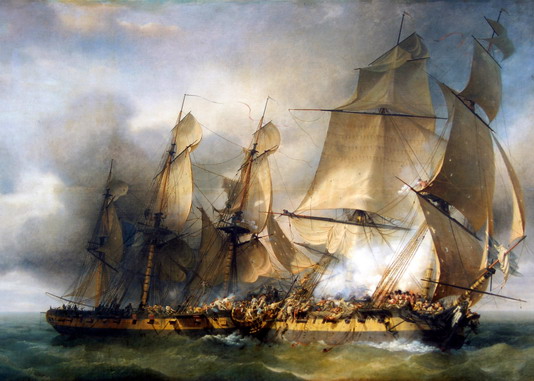
In an isolated incident near Île d'Aix, the crew of the vastly outgunned corvette Bayonnaise boarded the British Ambuscade and won her, in some of the bloodiest hand-to-hand fighting of 1798
Campaigns in Europe
The French were also under pressure in Belgium and Luxembourg where the local people revolted against conscription and anti-religious violence (Peasants' War). French troops deposed Pope Pius VI, establishing a republic in Rome.
Switzerland
On 5 March 1798, French troops overran Switzerland at the invitation of French-speaking factions in Vaud, and the Old Swiss Confederation collapsed. On 12 April 1798, 121 cantonal deputies proclaimed the Helvetic Republic, "One and Indivisible". The new régime abolished cantonal sovereignty and feudal rights. The occupying forces established a centralised state based on the ideas of the French Revolution.
Ostend Raid
On 18 May the British launched combined Royal Navy and British Army raid on Ostend to destroy the lock gates of the Bruge Canal and to burn the French gun-ships that were in the harbour. The objectives were achieved but the entire army contingent of 1,300 men were either killed or captured.
Ireland
An expeditionary force was sent to County Mayo in Ireland to assist in the rebellion against Britain in the summer of 1798. On 22 August, nearly two months after the main uprisings had been defeated, about 1,000 French soldiers under General Humbert landed in the north-west of the country, at Kilcummin in County Mayo. Joined by up to 5,000 local rebels, they inflicted a humiliating defeat (known as the Castlebar races to commemorate the speed of the British retreat) on the British at the Battle of Castlebar and set up a short-lived "Republic of Connacht", before final defeat at the Battle of Ballinamuck, in County Longford, on 8 September 1798.
Second Coalition
By the end of the year, the European powers, having recovered from their previous defeats and emboldened by Napoleon's absence, organized a new Second Coalition. The only military activity before the end of the year was in Italy, where Naples captured Rome on 28 October but was driven out by the end of the year.
HISTORY
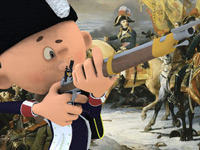
RESOURCES
This article uses material from the Wikipedia articles "War of the Second Coalition" and "Campaigns of 1798 in the French Revolutionary Wars", which is released under the Creative Commons Attribution-Share-Alike License 3.0.
© Stories Preschool. All Rights Reserved.
